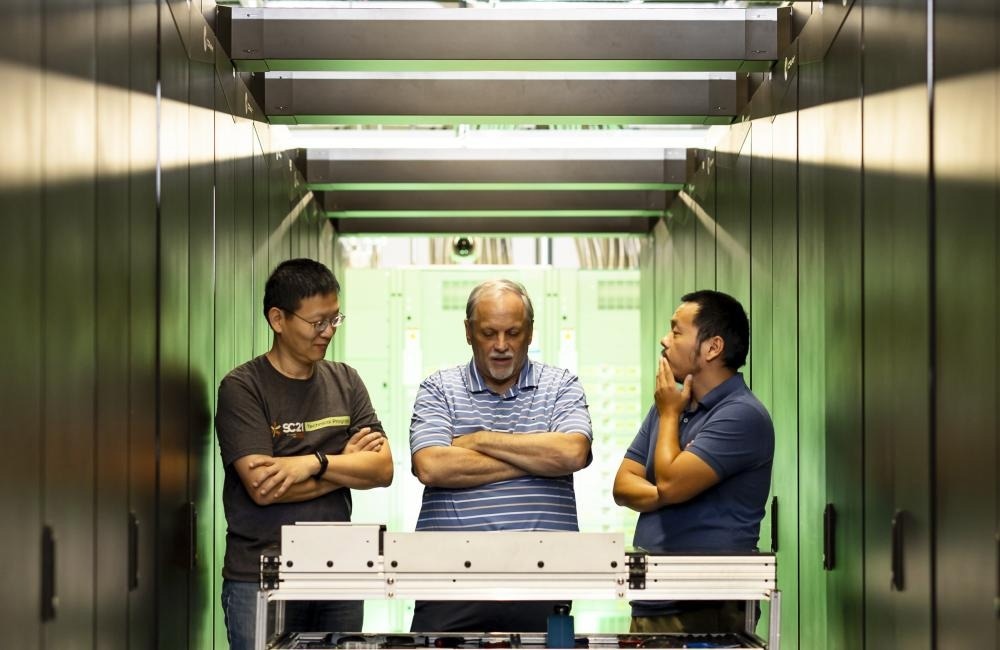The goal of the supercomputer’s development team, Frontier, was to break beyond the exascale barrier, but they went above and beyond.

The team that built Frontier set out to break the exascale barrier, but the supercomputer’s record-breaking didn’t stop there. From left are Analytics and AI Methods at Scale group leader Feiyi Wang, technical lead Mike Matheson and research scientist Hao Lu. Image Credit: Carlos Jones/ORNL, U.S. Dept. of Energy
The exascale number marks a major milestone itself, but it also marks the beginning of a new chapter in high-speed computing. We don’t have to wait for the next generation of computing anymore. We can have it here today.
Feiyi Wang, Group Leader, Oak Ridge National Laboratory
With an average performance of more than 1.1 exaflops, or 1.1 quintillion calculations per second, Frontier asserted its position as the fastest computer in the world. That is for double precision computations, which need 64 bits of memory per calculation to provide the highest level of mathematical accuracy.
Wang added, “Think of the difference between measuring a circle by calculating pi with two decimal places versus 10, 20 or more decimals. Think of the number of pixels in a photo. The more bits, the more detail captured.”
The speed of computation is sacrificed to achieve that level of precision. However, the accuracy needed is usually less—32, 24, or even 16 bits—because artificial intelligence and machine learning algorithms, which simulate the human brain in gradually learning to identify patterns, require less precision. Frontier’s processors can operate at speeds well above exascale, thanks to this distinction.
The capability is so new Wang and his colleagues had to devise a new type of test to measure it. Frontier’s mixed-precision rates were measured at 9.95 exaflops, or 9.95 quintillion calculations per second, about eight times faster than the double-precision computations that broke the exascale barrier.
“We didn’t expect this capability. Think about what we can do with it. Say you want an AI model that can recognize a malignant tumor. The faster the speeds, the more data you can use to train a larger model for more accurate results. We are approaching the point where we could actually simulate the human brain,” Wang stated.
The human brain’s about 80 million neurons function at a power level of around a dozen watts — less than the average light bulb and a minuscule fraction of the 30 megawatts that power Frontier.
Wang concluded, “Imagine if we can achieve that level of computing efficiency. Imagine if we can bridge the gap between human intelligence and machine intelligence. That would be a true breakthrough for humankind. How we bridge that gap will push us toward a better future, for computing and for our lives.”
The Oak Ridge Leadership Computing Facility is a user facility of the Department of Energy Office of Science situated at ORNL.
Source: https://www.ornl.gov/